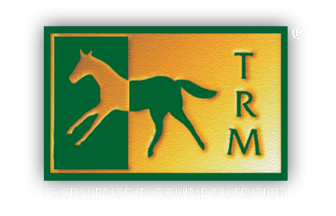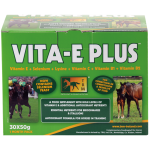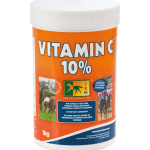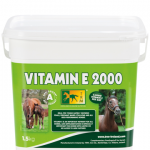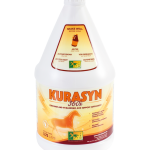Antioxidants – What are they and why does your horse need them?
What are Antioxidants?
Antioxidants are molecules that fight free radicals in the body. Free radicals are compounds that can cause harm if their levels become too high. Antioxidants are key factors in the fight against cellular level damage and inadequate levels of these important compounds can result in a decreased ability to fight off illness, recover from intensive exercise, cope with the stress of breeding and chronic disease.
Antioxidation & Oxidation
Oxidation is a process the body uses for normal energy production and immune function. This is part of the process that enables the body to transform nutrients such as carbohydrates, fats, and proteins into energy.
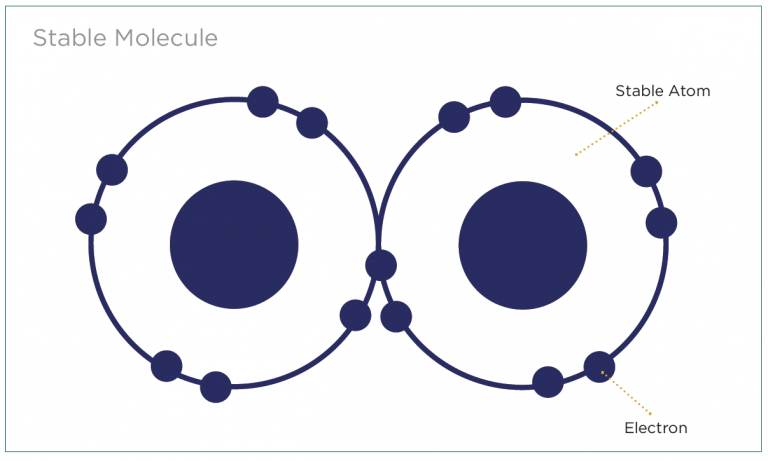
During oxidation a few unstable oxygen molecules called free radicals or reactive oxygen species are formed. These molecules have an unpaired electron that makes them quick to react with other molecules, stealing electrons from their outer orbits.
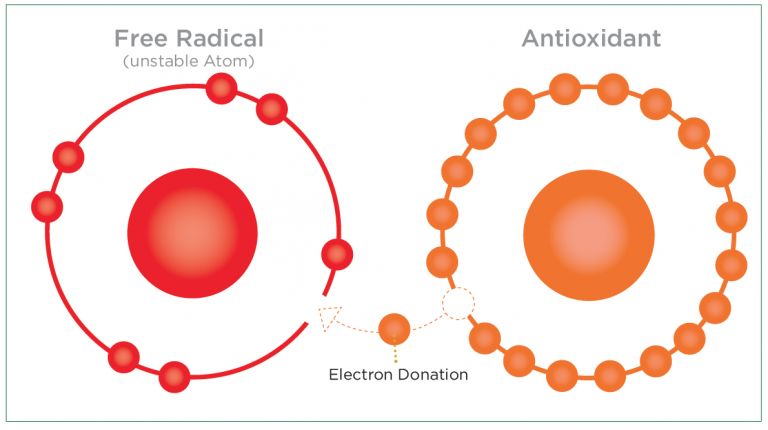
This damages the other molecules and can irreparably damage cell walls. When free radicals outnumber antioxidants, it can lead to a state called oxidative stress.

The body must have an ‘antioxidant defence mechanism’ to protect it from oxidation induced damage.
Components such as selenium, vitamin E and vitamin C function as major components of this defence mechanism. In the process of oxidising nutrients for energy, oxygen is used and carbon dioxide, water and free radicals are produced. These free radicals damage living cells, notably their proteins and lipids. Unsaturated fatty acids, which are the major component of all cell membranes, are particularly susceptible. Oxidation is quite damaging to cell function particularly muscle cell function in the high-performance horse. Antioxidants are nutrients that help prevent this oxidation-induced damage in the body.
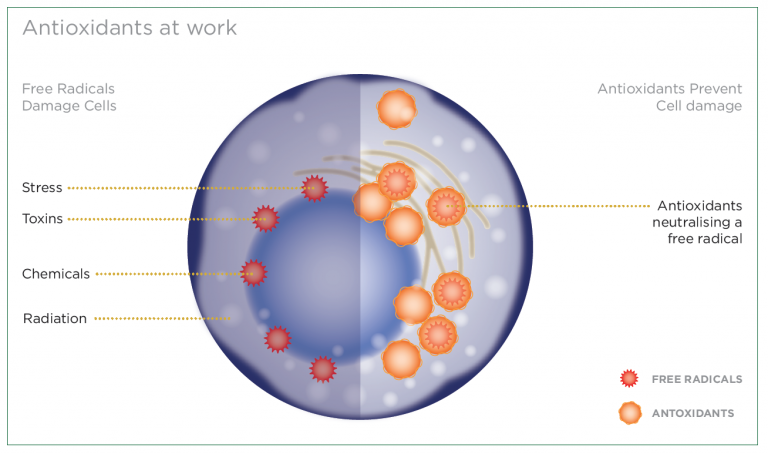
Under normal circumstances, antioxidants act to stabilize free radicals and halt this destructive process. In a healthy, unstressed horse on pasture, some free radicals are produced because this is a natural body process, but antioxidants easily counteract them. If a horse is stressed or exercising hard, however, the oxidation process speeds up and more free radicals are produced. Problems also occur when a horse’s feeds don’t have enough vitamins.
When free radical numbers are higher than normal due to stress, extreme exertion, inflammation, or other conditions that create more wear on the body, more cells are destroyed than are readily replaced. The horse begins to show signs of fatigue, disease, or damage in whatever body tissue or organ is most affected. The free radicals start a chain reaction of damage, and it is up to the antioxidants to stop it.
During physical exercise, oxygen flux to active skeletal muscles increases, which leads to excess production of ROS, free radicals and eventually oxidative stress. (Kinnunen et al 2005). In order to prevent oxidative stress, the body contains a large network of antioxidants that either prevent ROS formation or scavenge free radicals. Defence mechanisms that cope with oxidative stress depends primarily on the synergism between several endogenous and dietary antioxidants.
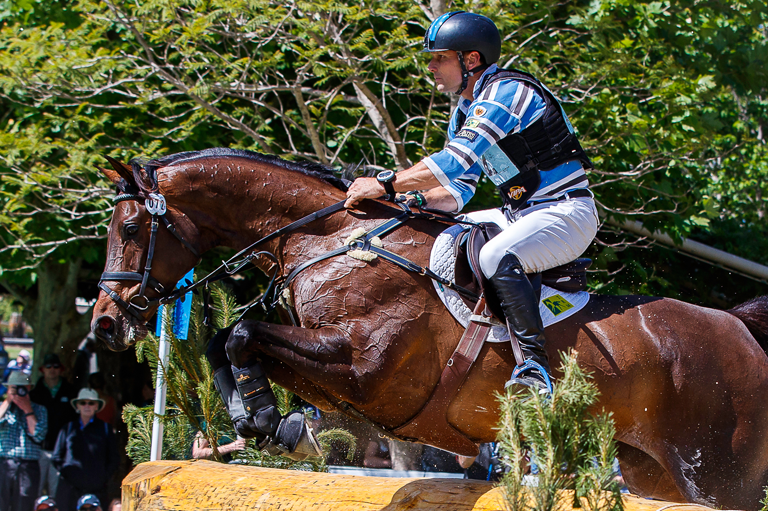
Dietary Antioxidants
Following are list of the popular and potent antioxidants applicable to performance horses:
Vitamin E is a fat-soluble antioxidant vitamin which is freely available to horses at pasture.
Vitamin E is a collective term for eight different compounds of plant origin, Alpha-tocopherol is the most biologically active. Vitamin E has a role to play in a number of
functions in the mammalian body, amongst which are; neuromuscular function, immune function and reproductive function. In the performance horse, vitamin E has a further
important role to play as an ‘antioxidant defence mechanism’. Stabled horses in training are at risk of avitamin E deficiency if they are fed a high grain / low forageration.
Vitamin C otherwise known as ascorbic acid, is a water-soluble antioxidant vitamin. Vitamin C helps protect lipid cell membranes, fats and proteins from oxidation induced free radical damage. Vitamin C scavenges free radicals in aqueous solution, while vitamin E scavenges free radicals at the site of lipid cell membranes. In a healthy horse, vitamin C is synthesized in the liver from glucose. In periods of stress, however, vitamin C levels can drop below what is efficient for antioxidant activity. Vitamin C is another component of the body’s ‘antioxidant defence mechanism’.
Selenium is an essential trace element required in the equine diet. Vitamin E and selenium work together in preventing nerve degeneration, the functions of the two are intricately linked and they also help prevent tying-up and other muscle problems in hard-working horses. Selenium forms part of the antioxidant enzyme ‘glutathione peroxidase’. This enzyme helps prevent the formation of free radicals and also destroys any lipid peroxides that are formed.
Curcumin has remarkable antioxidant activity and its main mode of action of is via free-radical scavenging. It has shown to be more effective than Vitamin C and Vitamin E and superoxide dismutase (Sharma OP). At the same concentration it has about twice the antioxidative activity of the polyphenol resveratrol (Aftab & Viera).
In Summary:
If left unchecked, the oxidation that occurs at the cellular level in horses and other mammals can cause muscular fatigue severe enough to compromise performance. When a horse is exercising strenuously, natural stores of antioxidants have difficulty providing sufficient protection against the cascade of free radicals generated from aerobic metabolism, making it necessary to supplement antioxidants.
For additional nutritional support and advise please contact the Team in TRM – [email protected].
